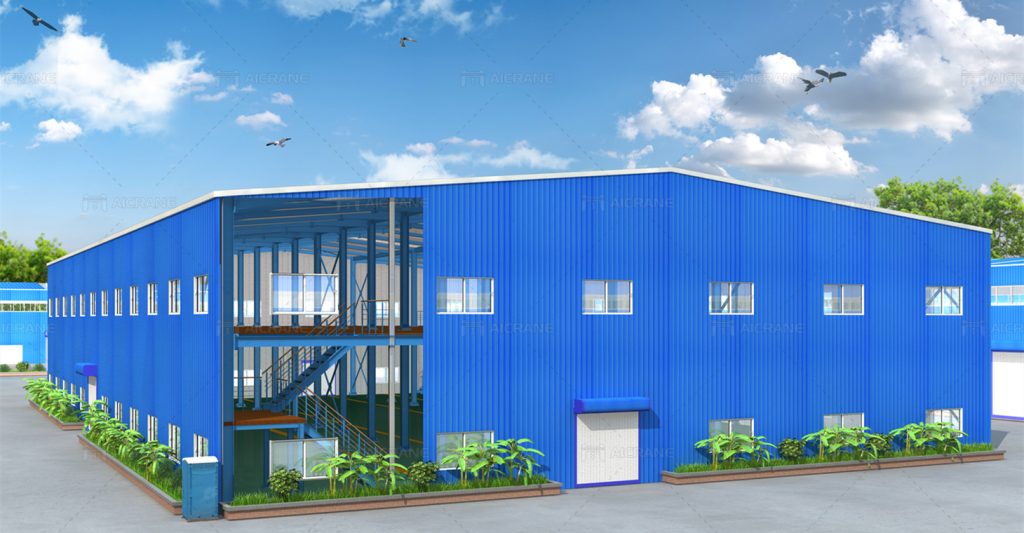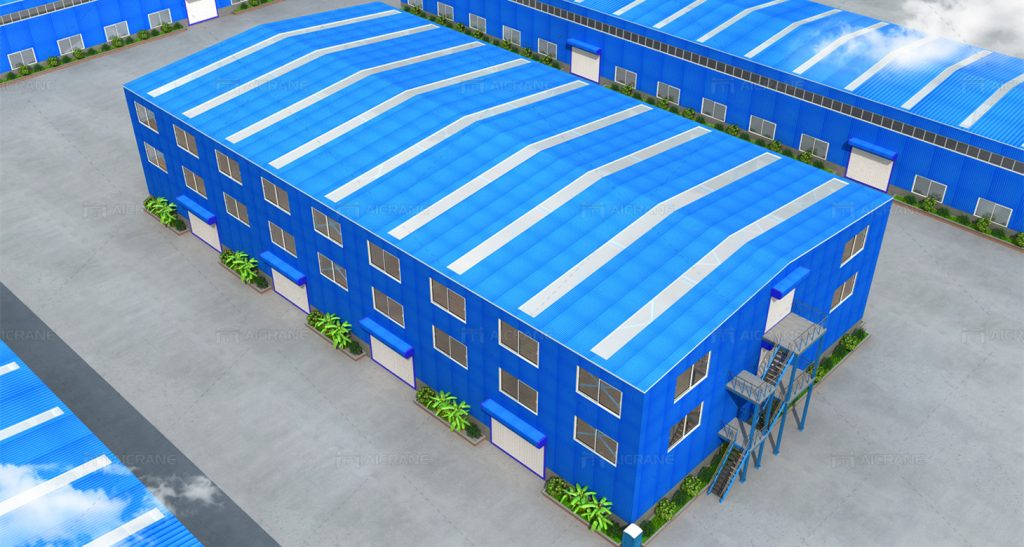When it comes to constructing a steel structure factory, the foundation is the most critical element of the entire project. A solid, well-prepared foundation ensures the long-term stability and durability of the building. Whether the structure is small or large, a proper foundation guarantees that it can withstand various external pressures such as weight, weather conditions, and ground movement. In this article, we will discuss essential tips for preparing the foundation for a steel structure factory, ensuring that the entire project is set on a firm base.

Site Analysis and Soil Testing
Before laying the foundation for a steel structure factory, the first step is conducting a detailed site analysis and soil test. The characteristics of the soil, such as its load-bearing capacity, water table level, and compaction properties, significantly influence the type of foundation required.
Soil Type: The type of soil—whether it’s clay, sand, or loam—affects how much weight it can hold. Clay soils may expand and contract with moisture levels, while sandy soils provide better drainage but less stability.
Load-Bearing Capacity: Soil tests will determine how much load the ground can support. If the soil cannot bear the required weight, soil improvements like compaction, grading, or adding base material may be necessary.
Water Table: High water tables can lead to issues like soil saturation and potential foundation shifting. It is crucial to understand groundwater levels and plan drainage systems accordingly to avoid problems down the road.
By performing these tests, you or the manufacturer like Aicrane can decide whether additional work is needed to strengthen the ground before laying the foundation. Skipping this step could result in costly repairs or structural issues in the future.
Foundation Type Selection
After the site analysis and soil testing, selecting the right foundation type for the steel structure factory is critical. The foundation type depends on factors like soil conditions, building weight, and environmental factors. Common foundation types include:
Shallow Foundations: For smaller steel structure factories with light loads, a shallow foundation such as a slab or mat foundation is ideal. These are laid near the surface and are typically used in solid soil conditions.
Deep Foundations: For larger structures or those built on weaker soil, deep foundations like pile foundations are used. Piles are driven deep into the ground to reach more stable soil layers, providing better support.
Raft Foundations: If the ground conditions are poor and cannot support individual footings, raft foundations are often used. These spread the load evenly across a large area, preventing differential settlement.
Choosing the right foundation type is crucial for the steel structure workshop construction because it directly influences the building’s durability and capacity to handle heavy machinery and production equipment.
Accurate Measurement and Leveling
One of the most important steps in preparing the foundation is to ensure that the site is accurately measured and leveled. Even small discrepancies in the leveling process can lead to structural imbalances, impacting the steel structure’s stability over time.
Surveying the Land: Hire a professional land surveyor to mark out the boundaries and ensure the foundation is laid in the correct location.
Leveling the Ground: The land must be leveled to prevent any uneven settling of the foundation. This may involve cutting and filling the land or using heavy machinery to ensure a flat, even surface.
Leveling and accurate measurements during the early phases of steel structure factory construction help eliminate future problems, ensuring a solid foundation and balanced structure.

Drainage Planning
Water is one of the most significant threats to any foundation. To prevent water from accumulating around or under the steel structure factory foundation, it is crucial to develop a comprehensive drainage plan.
Install Drainage Systems: Installing proper drainage systems such as French drains or surface drains can divert water away from the foundation, preventing potential issues caused by waterlogging or flooding.
Slope the Ground: Ensure the ground around the factory slopes away from the foundation. A grade of at least 5% away from the building can help keep water from pooling around the structure.
Waterproofing: For sites with a high water table, foundation waterproofing measures like using sealants or waterproof membranes are recommended. This helps protect the foundation from moisture-related damage over time.
Effective drainage planning protects the foundation and ensures the long-term performance of the steel structure factory, even in regions prone to heavy rainfall or flooding.
Reinforcing the Foundation
Reinforcing the foundation is critical for handling the weight of the steel structure factory and any equipment or machinery installed later. Reinforcement usually involves using steel bars or mesh, particularly in areas with heavier loads.
Rebar Reinforcement: Steel reinforcement bars (rebar) are embedded into the concrete to enhance its tensile strength, allowing the foundation to support the heavy loads typical in industrial settings.
Concrete Strength: The quality and strength of the concrete used for the foundation must meet the structural requirements of the factory. Using high-quality concrete ensures that the foundation can bear the intended loads without cracking or settling.
By reinforcing the foundation, you are safeguarding the integrity of the steel structure factory against the heavy pressures exerted by both the structure and the operational machinery within it.
Compliance with Local Building Codes
Local building codes and regulations must always be followed during the preparation of the foundation for a steel structure factory. These codes are designed to ensure that buildings are safe, durable, and suitable for the intended use.
Permits: Obtain the necessary permits before starting construction. Failing to do so can lead to fines, delays, or even having to tear down parts of the building.
Code Compliance: Work with professionals who understand the local building codes to ensure that the foundation is built to the required standards. This includes meeting earthquake, flood, and fire resistance regulations if applicable.
Compliance with local regulations not only ensures the safety of the building but also prevents any legal issues that could arise during or after construction.
Hiring Professional Contractors
Lastly, hiring experienced professionals is key to successful foundation preparation. Building a foundation for a steel structure factory requires specialized skills and expertise in engineering, soil mechanics, and construction.
Experienced Contractors: Look for contractors who specialize in industrial buildings and have a strong track record of working with steel structures.
Quality Assurance: Ensure that the contractors use high-quality materials and adhere to industry best practices for foundation construction.
By working with reputable professionals, you can avoid costly mistakes and ensure that the foundation is prepared to support the steel structure factory for decades to come.
The foundation of a steel structure factory is the most critical aspect of the construction process. Proper site analysis, foundation selection, leveling, drainage planning, and reinforcement are essential steps to ensure a strong, durable foundation. Additionally, compliance with local building codes and hiring experienced contractors are vital for successful foundation preparation. By following these tips, you can ensure that your steel structure factory stands the test of time, providing a safe and stable environment for industrial operations.